Photography composition is the skillful arrangement of visual elements within a frame to create striking and aesthetically pleasing images. It involves the conscious placement of subjects, lines, shapes, and colors to convey specific messages or evoke particular emotions.

A well-composed photograph takes into account factors such as balance, symmetry, leading lines, and the rule of thirds to guide the viewer's eye and maintain visual harmony. Composition is a vital aspect of photography that goes beyond technical proficiency, enabling photographers to transform ordinary scenes into extraordinary visual narratives.
By mastering composition, photographers can elevate their work, draw viewers into the stories captured in the frame, and leave a lasting impression.
1. Golden Spiral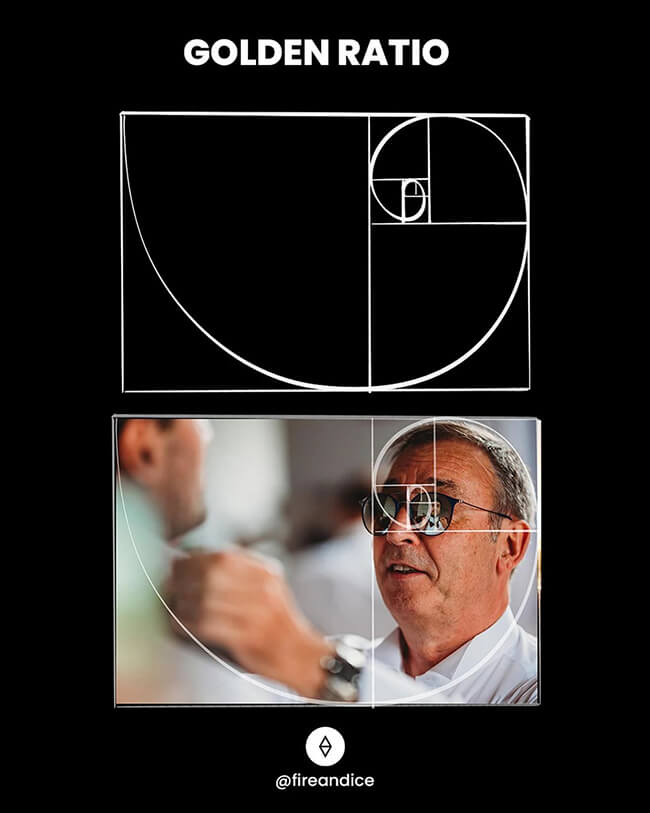
Based on the Fibonacci sequence, this composition uses an infinitely similar spiral-shaped arc, which can be used to create balanced and aesthetically pleasing photos.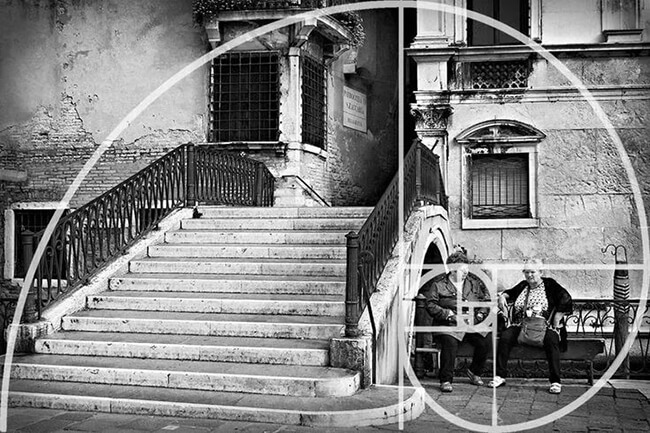
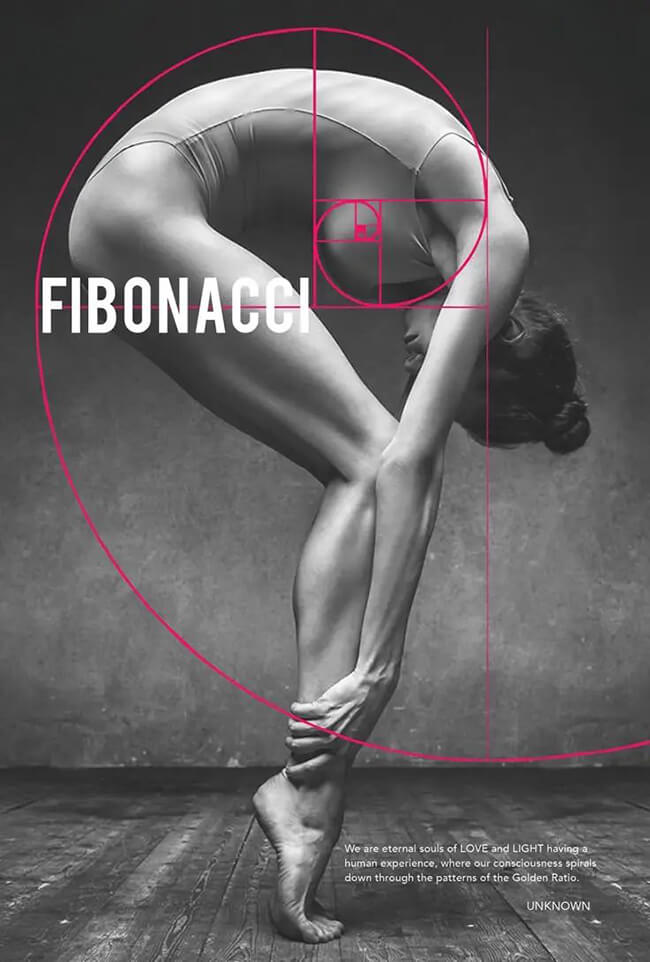
2. Center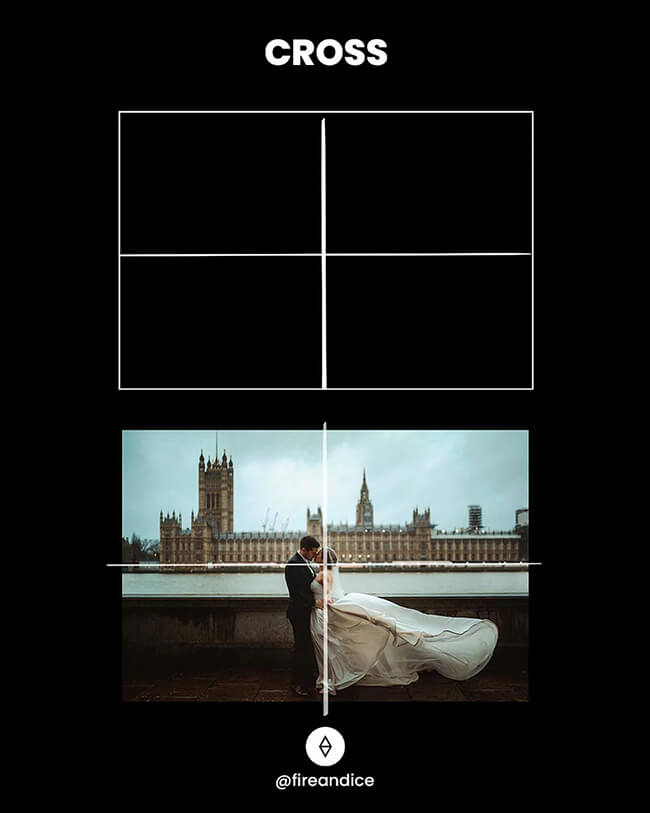
A simple and harmonious composition using two lines to create a midpoint crosshair, with the subject positioned at the center of the frame.
3. Tunnel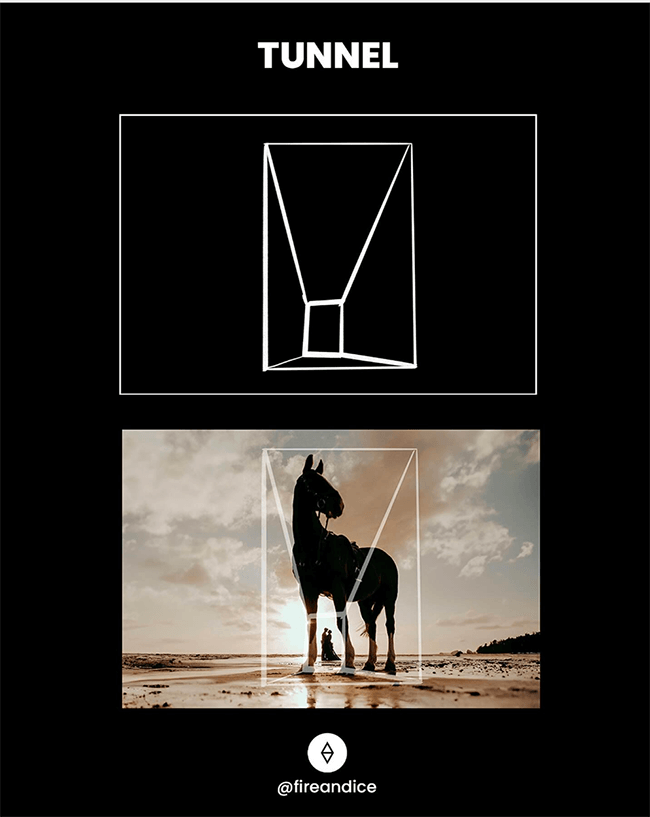
Similar to "leading lines", tunnel composition is used to draw your eye to the subject using depth.
4. L - shape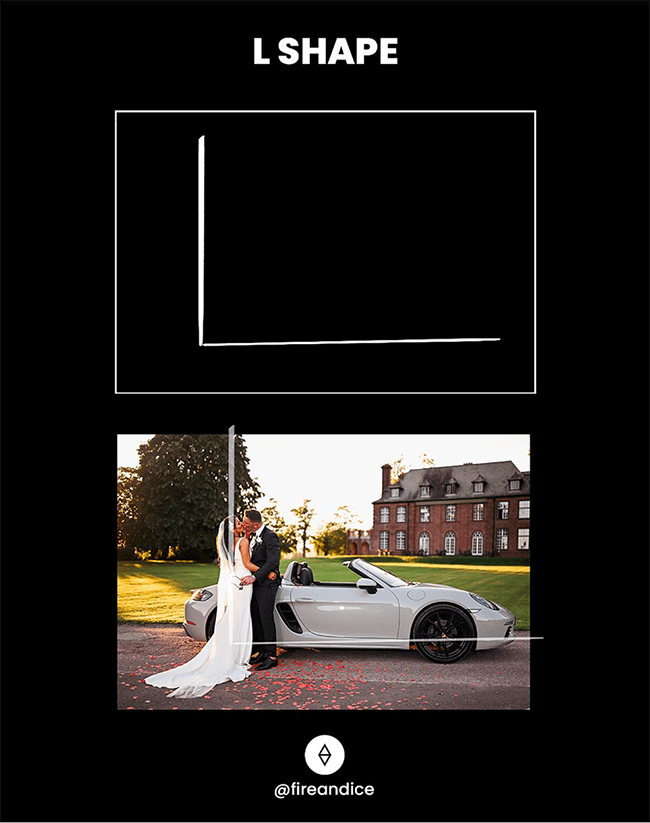
L - shaped composition occurs when elements form an "L" shape that can (and often is) multiplied. The static horizontal and vertical lines in this composition create a sense of rest, stillness, and harmony.
5. S - curve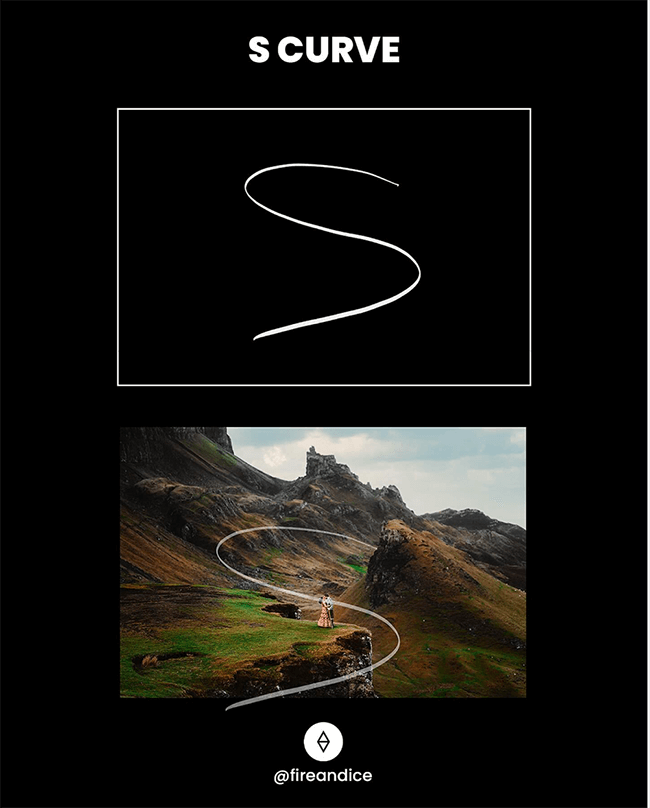
The curves in S - curve composition add a sense of movement to an otherwise static image. In some cases, they can even add visual depth and perspective to the shot.
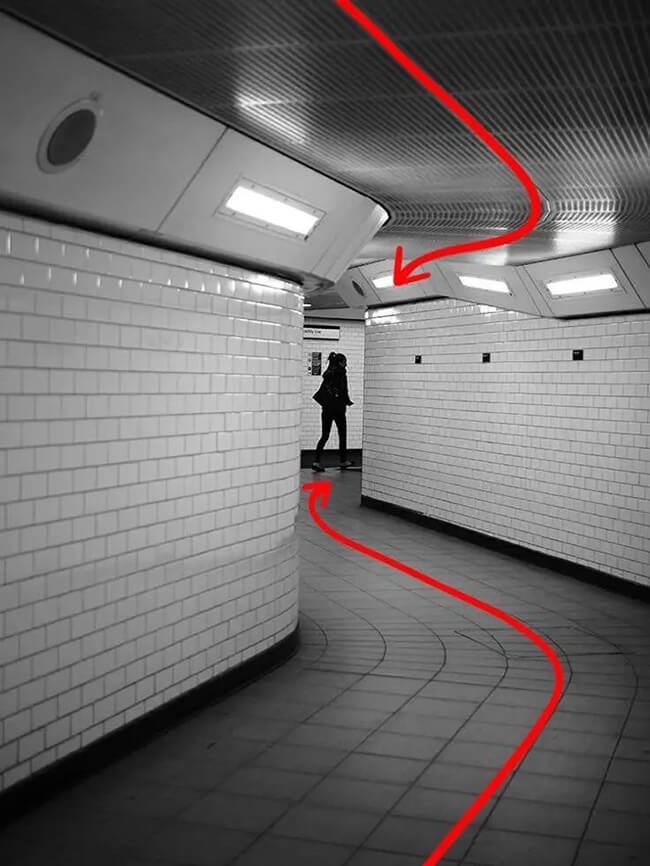
6. V - shape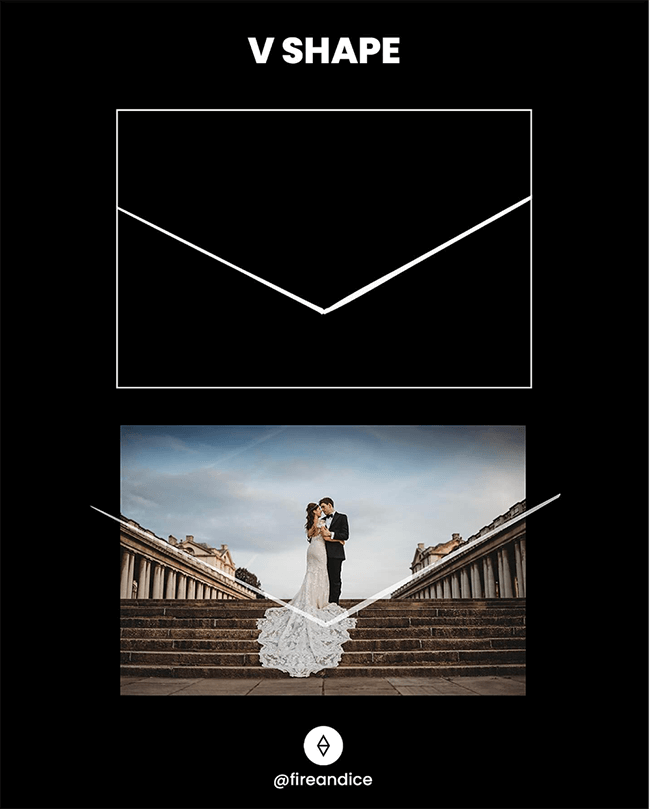
V - shapes not only quickly guide the eye to the focal point but also lock the viewer's attention onto the subject.
7. Circle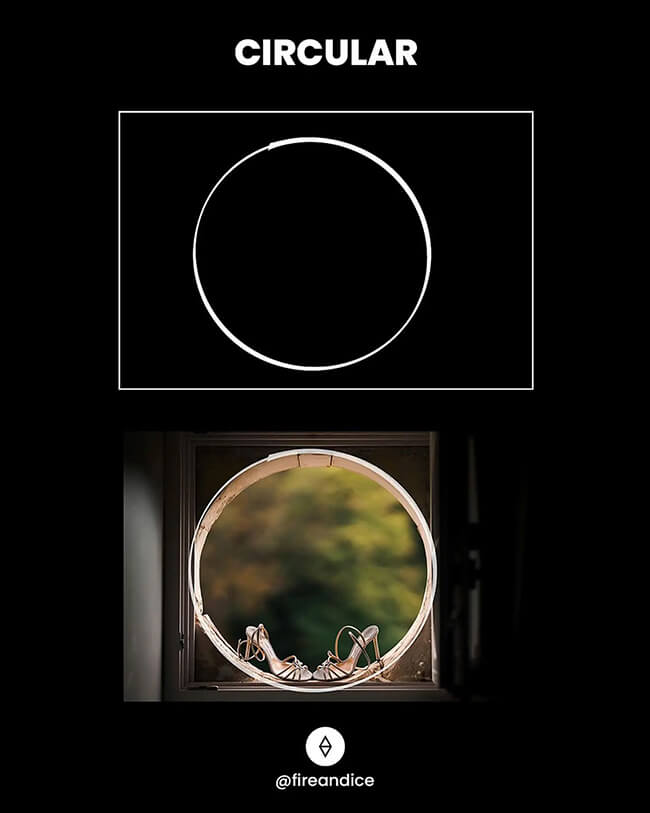
Circles provide a different compositional path where curves in the scene work well, but straight lines often do not align with the boundaries. A circle represents a framing element, and in many ways, it is closer to how we actually see the world.

8. Pyramid
Under a stable triangular composition, elements are arranged symmetrically. The example we showed above is very "literal", but this composition can use multiple elements in the frame to form a "pyramid" shape to keep attention on the image axis.

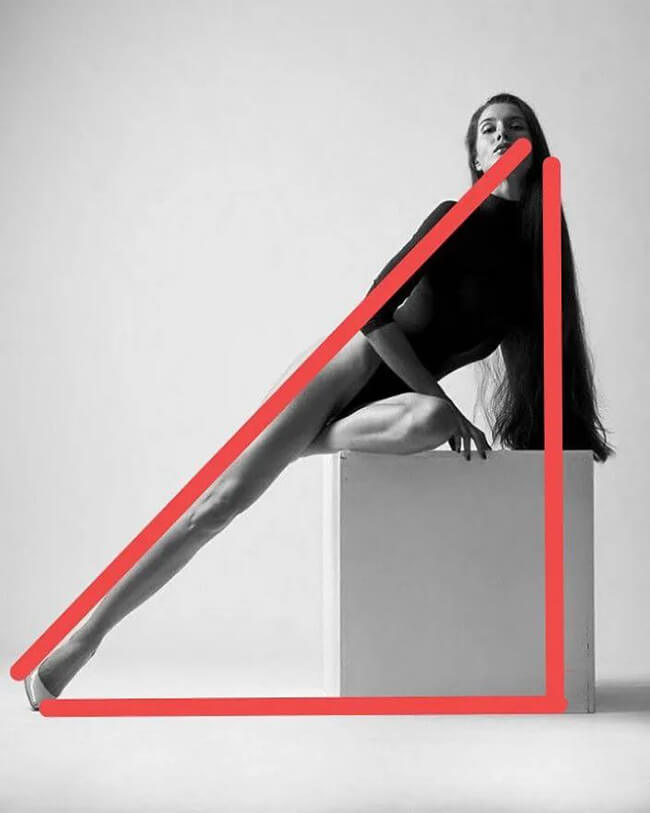
9. Rule of Thirds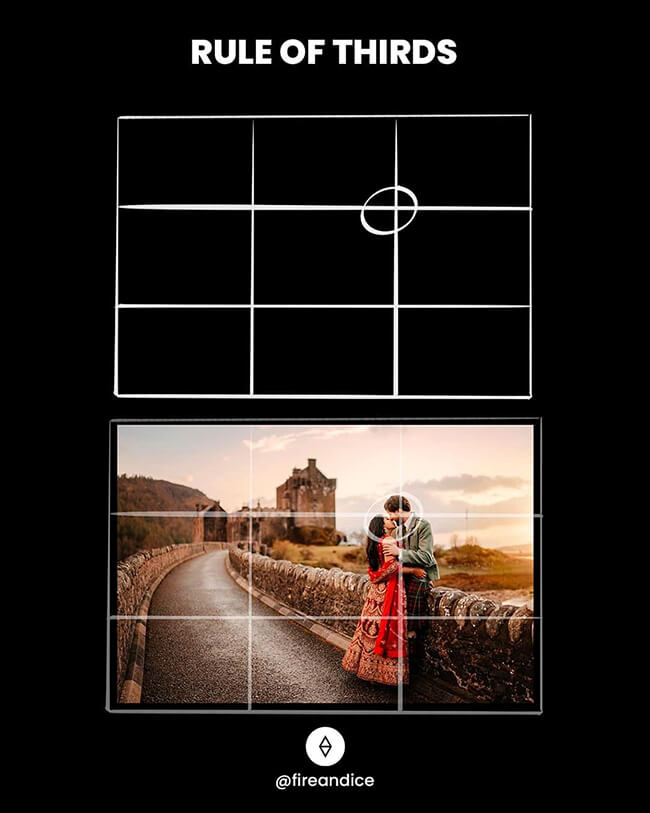
A grid used to divide a photo into 9 equal parts, providing 4 crosshairs for placing important subjects. This guide helps balance your main subject with negative space.
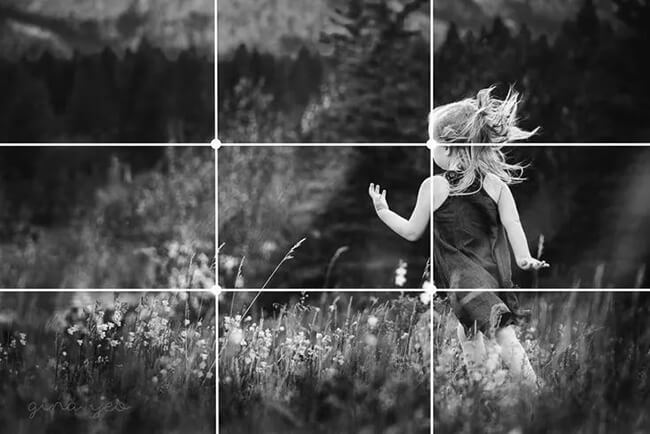
10. Balance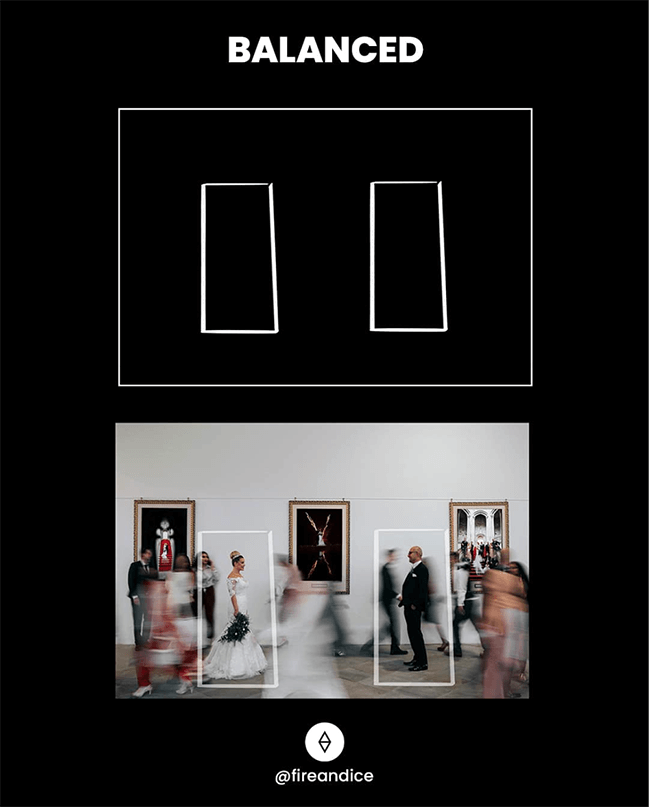
If you consider each element in the frame as having actual weight, a balanced composition offers two focal points with the same "weight" in terms of size, clarity, and color. A balanced composition creates a sense of calm and peace.
11. Imbalance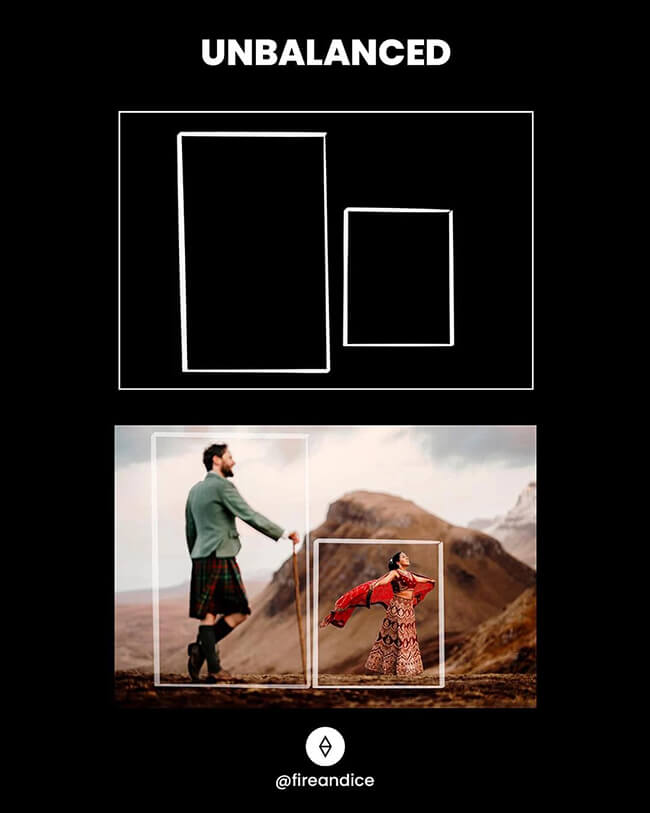
This composition often relies on depth and asymmetry, and can emphasize the focal point in the photo by prioritizing one focus over another.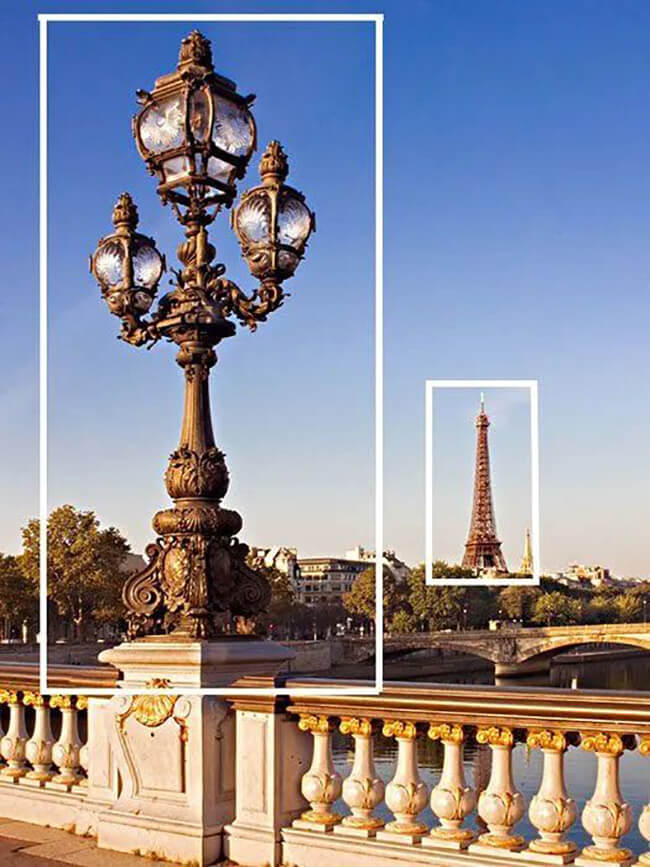
12. Diagonal
We often use diagonal lines to guide the viewer's eye through the scene towards the subject. Thus, diagonal lines can create a sense of dynamism and movement.
13. Double Diagonals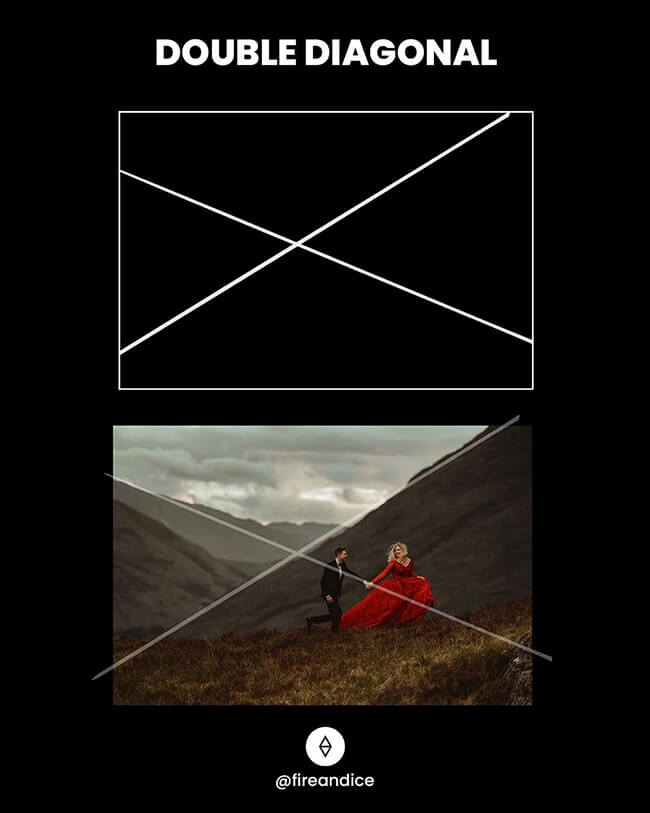
You can use multiple diagonal lines in the frame, especially when they work together to create harmonious leading lines that highlight your subject.
14. Golden Triangle
This rule is somewhat like the rule of thirds, but instead of straight lines, it uses a series of diagonal lines to form right-angled triangles. The main subject should be placed at the intersections of these triangles.
15. Radiation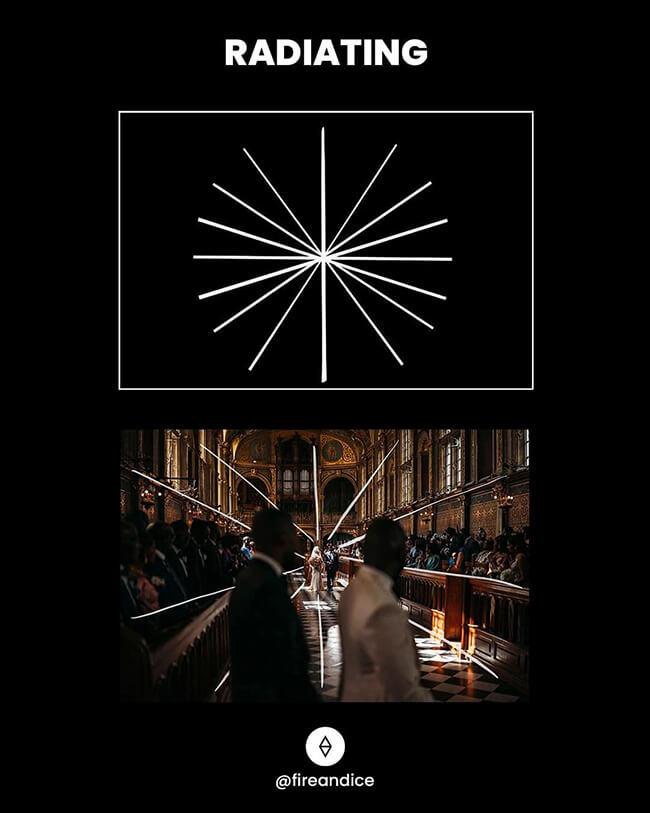
Elements in the composition radiate outward or inward from a central point, thereby adding depth and visual movement to the photo. This composition can create a sense of unity and smooth movement.
Related Tags: Photography experience Photographic composition
